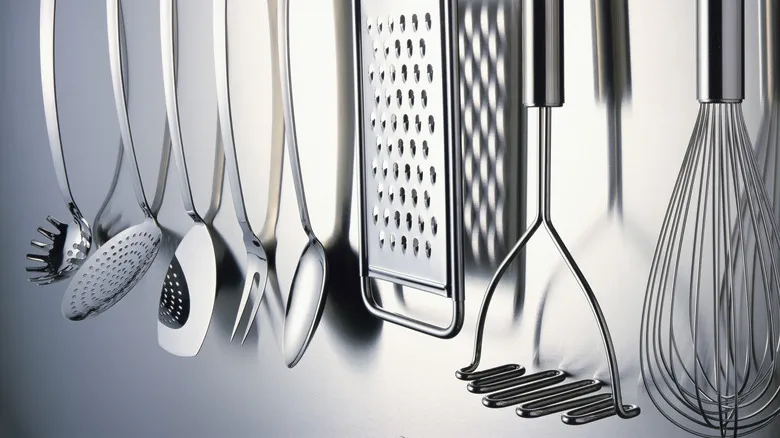Use your masher to keep pasta from clumping
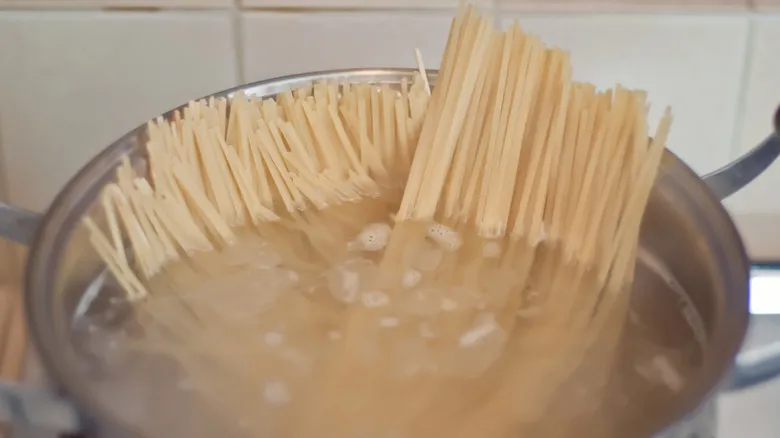
Long strands of pasta, like spaghetti and fettuccine, are a delightful treat — unless they stick together while cooking. If you don’t address the issue and untangle them promptly, you’ll end up with a clumpy, gooey disaster. And unfortunately, adding oil to your cooking water won’t solve the problem. Since oil floats on water, it won’t penetrate the pot to help lubricate your pasta. Instead, it will coat the pasta after draining, preventing your sauce from adhering properly.
So, what should you do instead? First, ensure you cook your pasta in a large pot of water to give it plenty of space to move. Second, wait for the water to reach a vigorous boil before adding the pasta. Lastly, grab your potato masher — its broad surface area is perfect for pushing dry pasta into the water and separating any clumps that may form.
Your masher is a great pastry blender
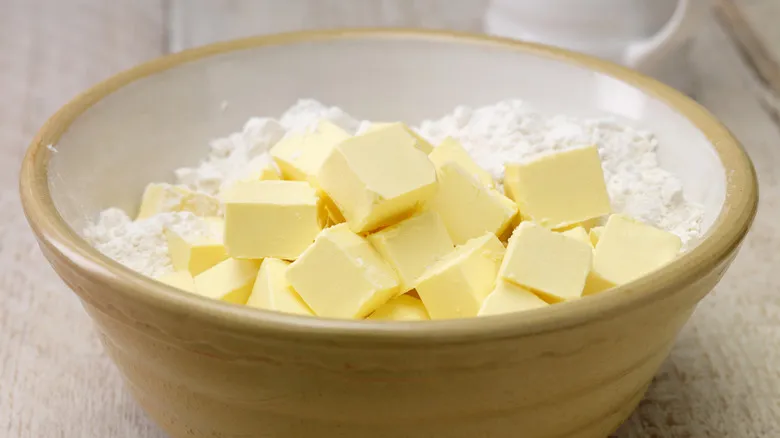
If you're a baker, you're likely aware that making pie and biscuit dough involves cutting cold shortening into flour to create a crumbly mixture. The small pieces of shortening that remain intact are essential for achieving the flakiness and rise in your baked goods. There are various methods for this process, each with its supporters. Some suggest using a pair of knives, one in each hand, to chop the shortening and mix it with the flour. Others prefer forks, specialized pastry blenders, or even their hands.
However, if you're looking for a quicker way to get the job done without dirtying your hands, consider using a potato masher. Like the other tools, it effectively breaks apart chunks of butter or solid shortening, and its wide, flat surface allows you to cover more area in less time. Additionally, it helps to evenly distribute the shortening throughout the dough, resulting in a consistently pleasing texture.
It makes refried beans a snap
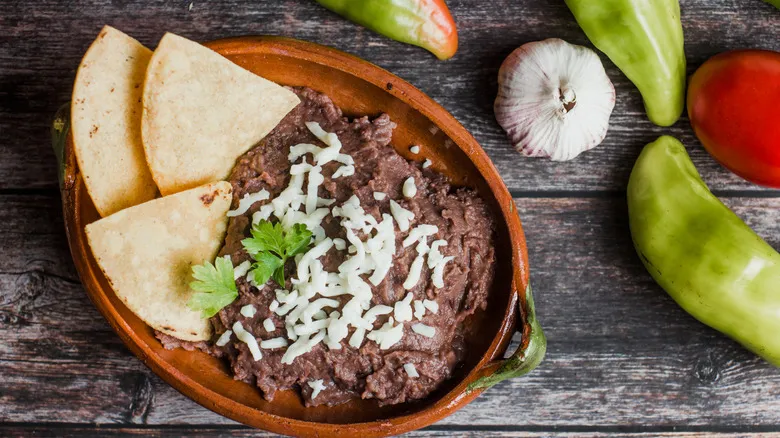
Dedicated fans of authentic Mexican cuisine understand that while canned refried beans are convenient, they simply can't compare to the rich flavor of homemade versions. If you want your next Taco Tuesday to be unforgettable, it’s worth taking the time to prepare the beans from scratch. Fortunately, the initial step of making refried beans—cooking dried beans the traditional way—requires minimal hands-on effort; you just need to monitor the pot and allow enough time for the beans to become tender.
The following step, which involves mashing and frying the beans, demands a bit more physical effort. Here, a trusty potato masher can be a great help. It quickly transforms fully cooked beans into a coarse puree and is much easier to clean than a food processor caked in bean remnants. While your hand-mashed beans may not achieve the ultra-smooth texture of their canned counterparts without some extra work, many diners appreciate the small chunks of beans and seasonings that contribute to the unique character of homemade refried beans.
A masher is also a great cocktail muddler

Large-batch cocktails are an excellent choice for busy party hosts. A large pitcher of margaritas or fruity sangria shows your guests that you care about their enjoyment while saving you the hassle of mixing individual drinks. Plus, it presents a more polished and organized look than a cluttered table filled with bottles of liquor and mixers for guests to mix on their own.
Even better, preparing large-batch cocktails is just as simple as making a single drink — you just need to increase the quantities. The main difference lies in the tools you'll use: opt for long-handled cooking spoons instead of cocktail stirrers. If your chosen cocktail includes fresh fruit or herbs — which many visually appealing pitchers do — make sure to have a potato masher handy. It’s surprisingly effective for muddling large amounts of fresh fruit in batches of cocktails or punch, and it’s much quicker than the large spoons typically used for this purpose.
It works wonders on guacamole
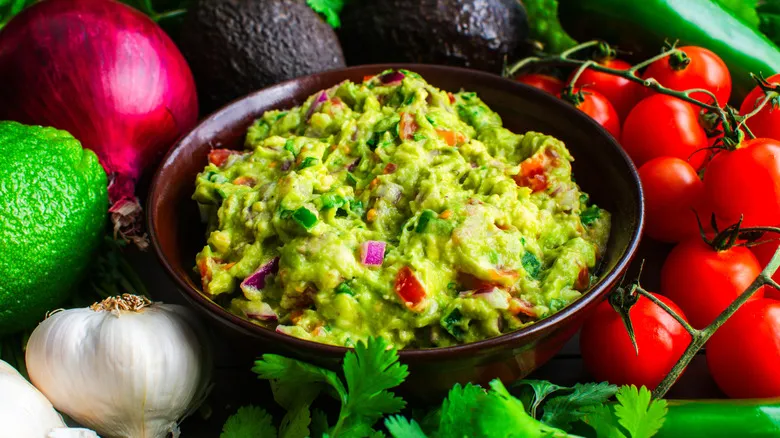
Guacamole is incredibly easy to prepare, but achieving the perfect result hinges on timing. First, ensure your avocados are at the ideal ripeness—soft enough for easy mashing, yet not so overripe that they begin to darken inside. Next, it's crucial to serve it to your guests promptly; as we all know, guacamole can quickly turn an unappealing shade of brown if left exposed to air for too long. Therefore, it's best to prepare it just before serving. Additionally, you should work swiftly while making guacamole to prevent it from darkening before it reaches the table.
As soon as you slice open your avocados and place them in a bowl for mashing, the countdown begins. If you're preparing guacamole by hand (which is advisable for a pleasing, slightly chunky texture), a potato masher will be more efficient and easier to use than a fork. While you may not notice much difference when mashing just one or two avocados, your arms will definitely appreciate the effort if you're making a larger batch.
A masher lets you keep your hands clean when mixing meatloaf
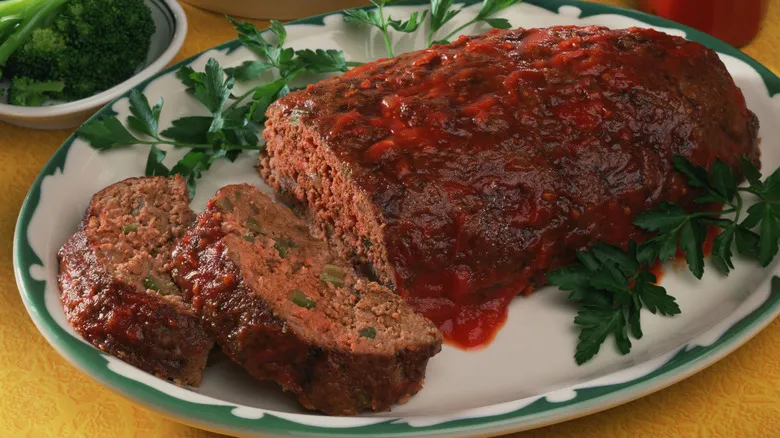
For many American diners, meatloaf is one of the most inviting and comforting meals. Its simplicity in preparation is another reason it remains a favorite among home cooks. Even better, it can adopt any flavor profile you desire—ranging from sweet to spicy to savory, enhanced with special ingredients like bacon and cheese. Many cooks enjoy the tactile experience of crafting a homemade meatloaf; the act of mixing everything together in a large bowl feels both satisfying and enjoyable.
On the other hand, some people dread the idea of handling a cold, slimy mixture of raw meat and eggs. They may grit their teeth and endure the process, but they’ll dislike every second of it. Alternatively, they might attempt to mix the ingredients with a spoon or fork, which is a much slower and less effective method. If this resonates with you, we understand—and we suggest swapping your spoon for a potato masher. This tool will blend your meatloaf ingredients much more efficiently while keeping your hands clean. Plus, since you’ll likely be preparing mashed potatoes to accompany your meatloaf, it makes sense to have your masher handy.
It can speed up your egg salad production

Egg salad is a beloved choice for both laid-back picnics and elegant tea sandwiches. While it’s essentially straightforward—consisting of hard-boiled eggs, a touch of mayo, and any desired seasonings—preparing it can come with its challenges. First, there’s much debate over the best method for boiling eggs, along with differing opinions on how to peel them correctly. Once you’ve successfully peeled your eggs, you need to chop them to create a filling that’s easy to spread. Neatly dicing them with a knife works well for small quantities, but it can become quite tedious when making egg salad for a larger group.
A potato masher can significantly streamline this task—simply place your peeled eggs in a mixing bowl and mash them. The masher’s broad surface allows you to crush one or two eggs with a single, well-placed press, and if you prefer a creamier texture for your egg salad, just continue mashing until you achieve the desired consistency—it won’t take long.
Use the tool to crumble ground meat quickly

Ground meat has long been a clever chef's go-to for feeding a large group affordably and deliciously. When used as a key ingredient in pasta sauces, stuffed vegetables, tacos, or various savory pastries, even a small amount of ground meat can create a hearty meal for many.
To guarantee that diners enjoy a bit of meaty flavor in every bite, numerous recipes instruct cooks to crumble the ground meat into small pieces as it cooks. This process needs to be done promptly; otherwise, the meat may end up cooking into uneven clumps or, even worse, a single solid mass. While most of us typically use spatulas or cooking spoons for this job, a potato masher is actually a superior choice. Mashing the meat while stirring as it cooks helps it break apart quickly and achieve the desired crumbly texture more efficiently.
It's an easy way to emboss your cookies

Many of us cherish the memories of baking cookies with our loved ones during childhood. Typically, our patient elders handled all the measuring and preparation, while we "assisted" by rolling the dough into balls or using the cookie cutter. If you were fortunate enough to make classic peanut butter cookies, you had the delightful job of creating that iconic grid pattern by pressing down twice with a fork.
We still adore peanut butter cookies just as much now as we did back then, but baking them for a group, while still enjoyable, doesn’t quite compare to the carefree excitement of a 5-year-old with no deadlines. So, when we find a way to streamline the process without compromising quality, we embrace it. For example, if you want that charming pattern but are short on time (or lack an enthusiastic child), simply use a potato masher to press down on your cookies — the grid design on traditional mashers gives you that classic appearance in just seconds.
It makes cracker crumbs without making a mess
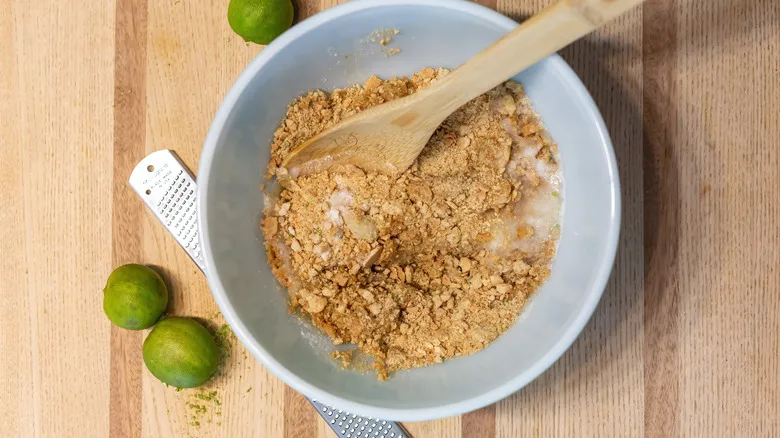
Cracker and cookie crumbs may seem like simple ingredients, but they play a crucial role in many recipes. Cheesecakes and various desserts often rely on a crust made from graham cracker crumbs, while savory cracker crumbs contribute flavor and texture to casseroles and breading. Graham cracker crumbs are such a common kitchen staple that you can easily purchase them pre-made in boxes. However, if you're looking to save a few dollars or need crumbs from different types of cookies or crackers, you'll need to make them yourself.
This process can get a bit messy. A food processor is the quickest option if you have one on hand. If not, a classic approach is to use a rolling pin. While this method works, even if you place your crackers in a plastic bag or between sheets of plastic wrap, you might still end up with crumbs scattered across your counter and floor. A potato masher provides a cleaner alternative for crushing crackers or cookies. Simply place them in a large bowl and mash away. This way, the crumbs stay contained, resulting in less waste and a more stress-free experience.
It can smash, as well as mash, potatoes

Smashed potatoes are a wonderfully simple concept that are surprisingly easy to prepare, yet they've only gained popularity in recent years. These delightful bites, crispy on the outside and soft on the inside, can be enjoyed as a snack with a dip on the side, reminiscent of hot, thick potato chips, or served as a side dish with a main course. Essentially, they consist of small whole potatoes that are boiled in their skins, gently pressed until slightly flattened, and then quickly pan-fried or baked at high temperatures until they become crunchy. They provide all the satisfying texture of French fries but with significantly less oil and effort.
To streamline the already quick preparation process, grab your potato masher – it simplifies the somewhat tricky task of flattening the potatoes. Just apply a firm press to each cooked potato with the masher, being careful not to crush it too hard (a few cracks around the edges are normal and will turn wonderfully crispy when fried or baked). As an added bonus, the masher may leave unique imprints on the potatoes, enhancing their texture and crunch.
Recommended
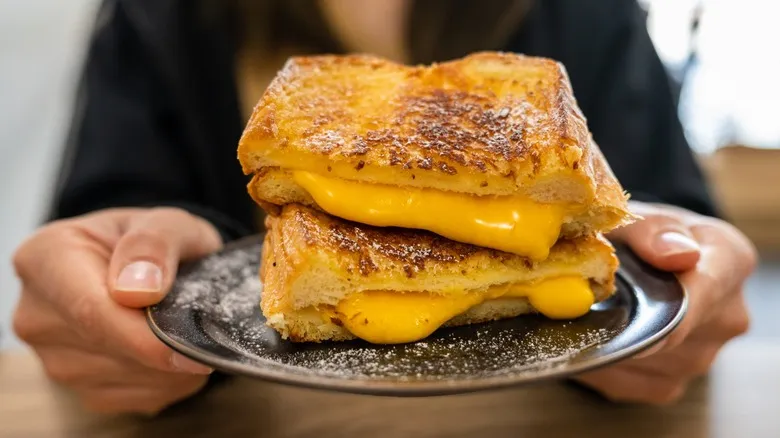
Hot Dogs Belong In Your Grilled Cheese
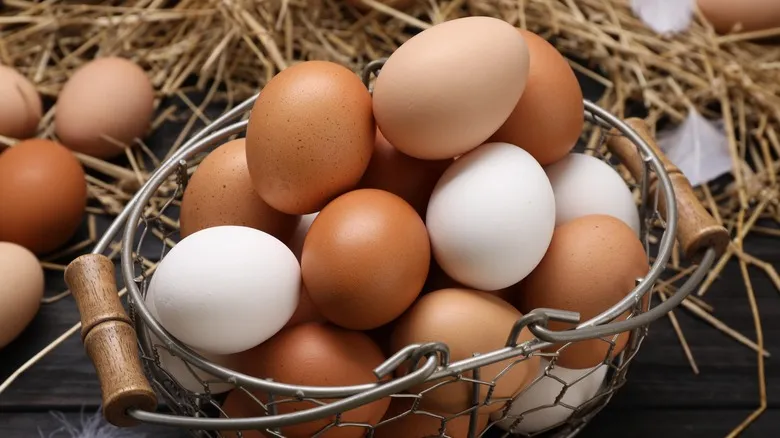
Does Lemon Juice Make Raw Eggs Safe To Eat?

The Garlic Peeling Hack That Lets You Get Out Any Pent-Up Energy
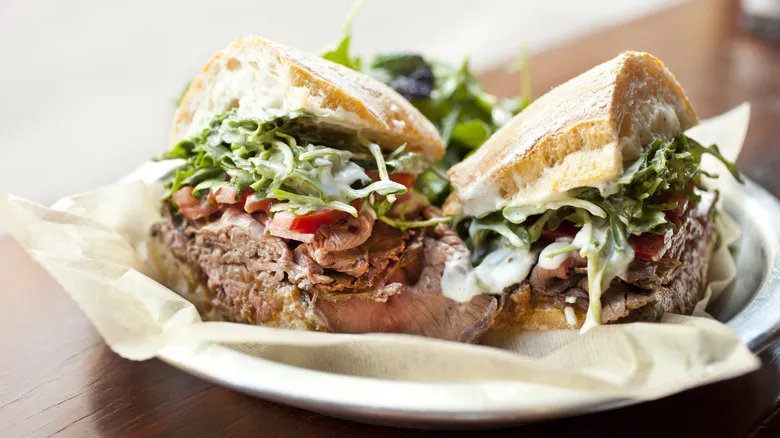
The Simple Mayo Method That Ensures A Symmetrically Sauced Sandwich
Next up

